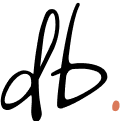(Read Part 1 first.)
At some point in my teens, I started lifting smaller weights to gain some muscle. I have some vague memory of sprinting up a hill, too. But this must have been a one-off after reading something on Reddit; I never owned running shoes or any other kit.
It was new to think of myself as fit. Those bottom-group PE vibes took a long time to fade. In this hippie phase, I started to care more about moving and breathing well, and I would also go on long walks into any green area I could find.
I’d done Tang Soo Do as a kid, but I picked up Ninjutsu in my 20s and got my black belt a few years later. The training was intense and often provoked my anxiety, but it instilled in me a confidence in confrontation that has never left me since. From walking around under the constant fear of being picked on, this was a radical transformation.
Being a Ninja is pretty cool, but there were bumps along the road. One time, someone lifted me off the ground and landed on my belly. In the impact, an enormous fart was prematurely levered from my colon, at maximum volume. Several people inquired as to whether I’d soiled myself, but happily, my pants were dry. Sadly, the smell was so terrible that many were left wincing during our line-up at the end.
When I started working in Bath as a software engineer, the office was opposite a YMCA gym. I started going most lunchtimes, using the treadmill, cycling machines and weights. This was my first introduction to running, proper. If I was feeling brave, I’d use the rowing machine, a device uniquely suited to inducing a full-body vomit reflex when used for more than 20 minutes.
In my late 20s, anxiety became a huge fixture in my life. I learned that working out was a mental health elixir. It showed me I could push my body to handle so much more than the narrative of physical fragility running through my head suggested.
Later, I moved into a house in the country. I started running on trails and through fields. Fitness wearables were now pretty popular, and I got a Fitbit to track my runs. Suddenly, I had a visual representation of this otherwise free-flowing activity, and I got hooked on improving it.
The obsession came on quickly, a combination of the geek poring over metrics and the rest of me enjoying being out in nature and on trails. I loved waking up at the crack of dawn, traversing new routes, and carrying any food and water I needed with me.
I lost weight and got in the best shape of my life. I didn’t care for competition, but after watching the 2016 Olympics, I felt drawn to enter an event. I signed up for a 10k.
Relish Running, the organisers of the 10k, also put on other races on the same day. I distinctly remember looking at someone ready to start what must have been the 50k. They were wearing compression socks, a stupid hat and a vest stuffed with flasks and food. I thought they looked absolutely ridiculous and mumbled something about people taking things too far.
Shortly afterwards, I read Born to Run and started shopping for my own running vests. I did one marathon just to tick it off and then moved on to ultramarathons. I ran 5 of those, culminating in a 100km mental health fundraiser, which meant running for 13 hours in a heatwave.
Running had become an essential part of surviving the anxiety disorder. It also connected me with other unfamiliar parts of myself: desires to conquer and compete, to stamp and ascend. The simplicity of getting from A to B, with the added bonus of overtaking others, was exhilarating. It also allowed me hours of time in nature, something I’d been lacking for years.
I couldn’t imagine life without running.
Get my sharpest ideas, once a week.
I publish every day on fitness, tech, wisdom & learning, drawing on my experience as a founder, coach & meditator. I distill the best insights every Wednesday:
